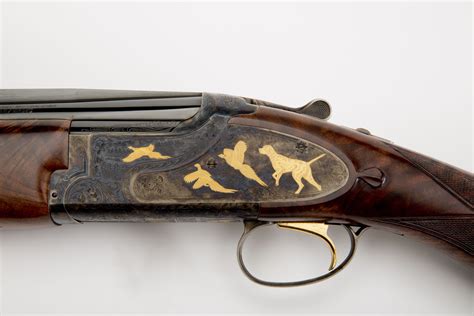Understanding Browning Citori Grades: A Collector's Guide
The Browning Citori, a name synonymous with elegance and reliability in the world of over-and-under shotguns, boasts a rich history and a diverse range of grades. Understanding these grades is crucial for both seasoned collectors and those just beginning their journey into the world of fine firearms. This guide delves into the intricacies of Browning Citori grading, providing insights into the features that distinguish each grade and helping you navigate the market with confidence.
What Makes a Browning Citori Grade Special?
The different grades of Browning Citori shotguns aren't simply about aesthetics; they represent significant variations in materials, craftsmanship, and overall quality. Higher grades utilize more meticulously selected wood, finer engraving, and often, more intricate mechanical work. These differences directly impact the shotgun's performance, feel, and, naturally, its value.
Key Factors Determining Citori Grades
Several key factors contribute to the grade assigned to a Browning Citori:
- Wood Quality: The grade of walnut used is a primary differentiator. Higher grades feature beautifully figured, richly colored wood with minimal blemishes. Lower grades might utilize wood with more visible grain inconsistencies or minor imperfections.
- Engraving: The extent and intricacy of the engraving are significant indicators of grade. Higher grades boast elaborate, hand-engraved designs, often featuring game scenes or scrollwork. Lower grades may have simpler, machine-engraved patterns or no engraving at all.
- Metalwork: The quality of the receiver's finish, including the bluing or other finishes, contributes to the grade. Higher grades often exhibit a deep, lustrous finish, applied with meticulous attention to detail.
- Overall Fit and Finish: The overall fit and finish of the gun, including the wood-to-metal checkering, and the action's smoothness, are vital considerations. Higher grades exhibit exceptional precision and attention to detail in every aspect of their construction.
Exploring Different Browning Citori Grades (Examples - Specific models and their features may vary across years)
While Browning's exact grading system and model offerings have evolved over time, certain distinctions remain consistent. Understanding the general distinctions is key. Remember to always verify details with a specific Citori's serial number and documentation.
Lower Grades (e.g., Citori 725 Sporting Clays): These models typically feature less-figured walnut, simpler engraving (or none), and a more utilitarian focus on function over elaborate ornamentation. They remain excellent shotguns for sporting clays or hunting, prioritizing performance at a more accessible price point.
Mid-Range Grades (e.g., Citori 725 Grade I): These models often step up the quality of wood, exhibiting better figure and color. Engraving might be more refined, perhaps with machine-engraved scrollwork, and the overall fit and finish will be superior to lower grades. They provide a balance between performance and elegance.
Higher Grades (e.g., Citori 725 Grade V, Citori 725 Sporting Clays, and higher): These represent the pinnacle of Browning's Citori craftsmanship. They feature exquisite, highly figured walnut, often with exceptional color and grain. The engraving is typically hand-engraved and exceptionally detailed, showcasing elaborate scenes or patterns. The metalwork is impeccable, with flawless bluing or other finishes. These guns are often collector's items, valued as much for their artistry as their performance.
Frequently Asked Questions (PAA)
How can I tell the grade of my Browning Citori?
The grade is often indicated on the gun itself, usually found on the receiver or in the documentation. However, a thorough inspection of the wood, engraving, and metalwork will also provide strong clues. If you're uncertain, consulting with a firearms expert or Browning specialist is advisable.
What is the difference between a Browning Citori and a Citori 725?
The Browning Citori 725 represents a newer generation of Citori shotguns, incorporating design improvements and enhanced features. While both share the over-and-under configuration and reliability, the 725 series generally offers refinements in ergonomics, mechanics, and receiver design.
Are Browning Citoris good investments?
Well-maintained Browning Citoris, especially higher grades, can appreciate in value over time, making them attractive investment pieces for collectors. Their enduring quality and craftsmanship contribute to their long-term desirability. The value depends on grade, condition, and overall market trends.
Where can I find information on specific Browning Citori models and their features?
The Browning website and various firearms collectors' resources offer extensive information on specific Citori models, their features, and production years.
Conclusion: Appreciating the Browning Citori Legacy
The Browning Citori's enduring popularity is a testament to its exceptional quality, reliability, and timeless elegance. Understanding the nuances of its grading system enhances the appreciation of these remarkable firearms, whether you are a seasoned collector or a newcomer to the world of fine shotguns. Careful research and attention to detail are essential when identifying and acquiring a Browning Citori, ensuring that you make an informed and rewarding choice.

